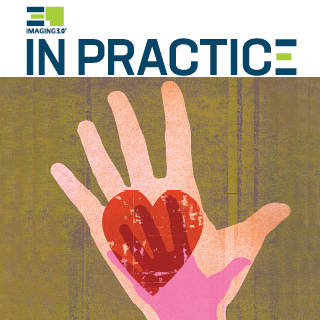Pediatric Radiology: A Team Sport

Click to Download the Full Issue and Resources »
The majority of radiology departments inside children’s hospitals have programs to support care that is centered around patients and their families. This approach underscores the importance of viewing patients and families as partners in care and serves to promote a safe and welcoming environment for children and their families.
As the adage goes, children are not small adults, and one size does not fit all. Families are increasingly informed about exposing their children to radiation, avoiding sedation or anesthesia when possible, minimizing invasive procedures, and understanding the cost of care. Children and their families have unique needs, expectations, and concerns when undergoing imaging studies, and parents are highly vested in getting the right imaging study for their children in the safest manner possible.
How can we best meet the needs of children and their families? Pediatric radiologists make a substantial difference in safety, accurate clinical decision-making, and, most importantly, improved outcomes for pediatric patients. Pediatric radiology is a team sport involving clinical colleagues and close collaboration among radiologic technologists (RTs), nurses, and certified child-life specialists, who are trained to interact with and perform diagnostic imaging examinations on children. Extending best imaging practices to benefit children across the entire house of radiology is an important part of the pediatric radiology mission. This is particularly important since most pediatric imaging is performed outside of children’s hospitals.
Radiology as a specialty is the recognized leader in promoting imaging innovation. A unique challenge for children is that imaging technology innovations have been slower to come to children for a host of reasons. Despite unique pediatric challenges, the case studies in this issue are evidence that innovations in the approach to pediatric care are thriving and include radiation-dose monitoring, minimally invasive image-guided therapy, and minimal sedation. The case studies in this issue provide excellent examples for how to improve the pediatric experience in radiology and can serve as a roadmap for all radiologists.
Clinical decision support based on pediatric ACR Appropriateness Criteria® is another excellent pediatric imaging resource for advising which exam is best for different clinical scenarios (available at acr.org/AC). The Image Gently Alliance (imagegently.org) also provides highly educational resources for radiologists, families, and healthcare professionals regarding the roles of different imaging modalities and the importance of appropriately adjusting the radiation dose when
imaging children.
Children are precious. Ensuring a bright future for our children is our responsibility..

Richard A. Barth, MD, FACR
Chair, ACR Commission on Pediatric Radiology